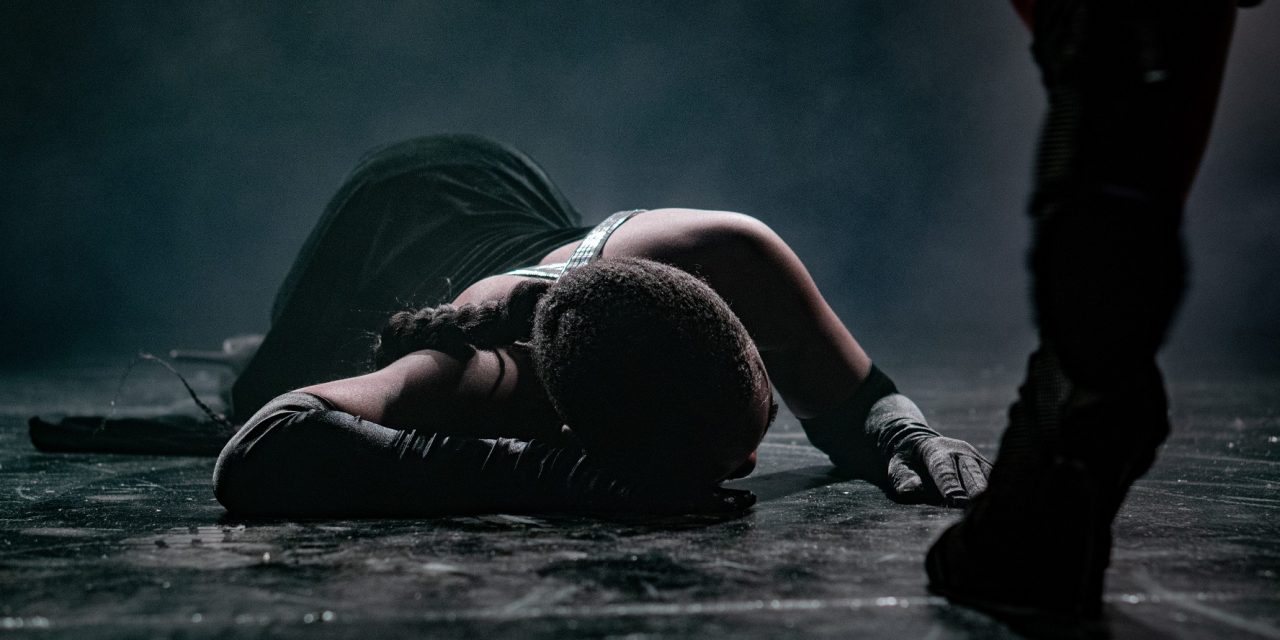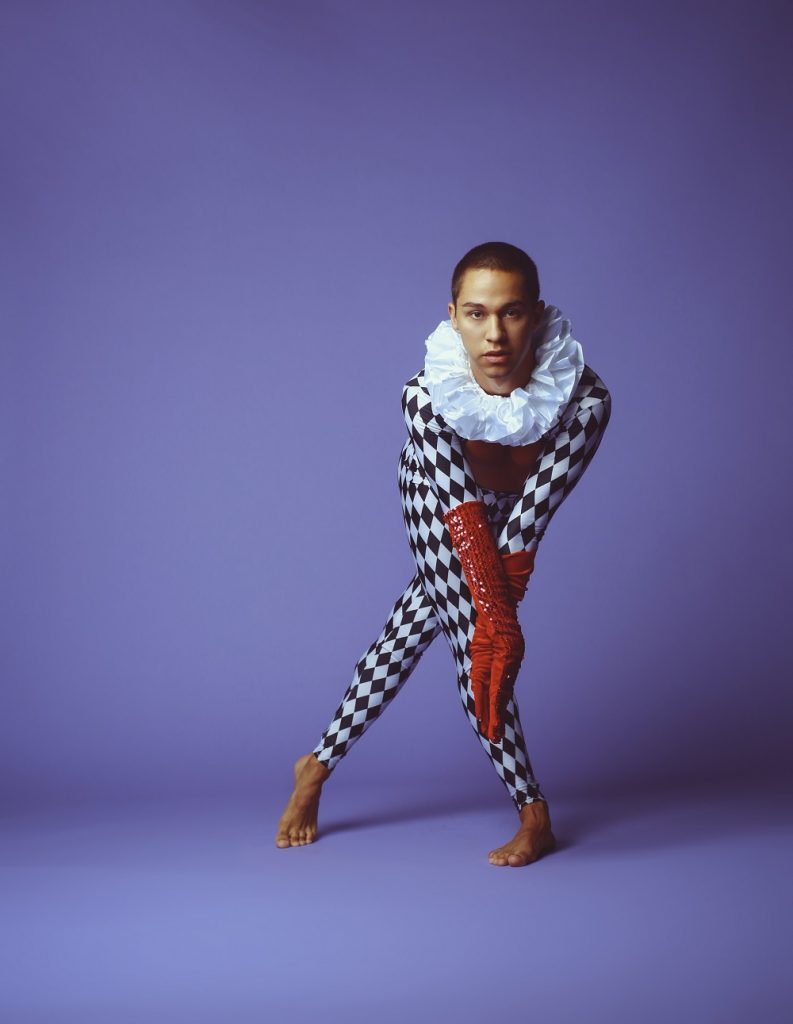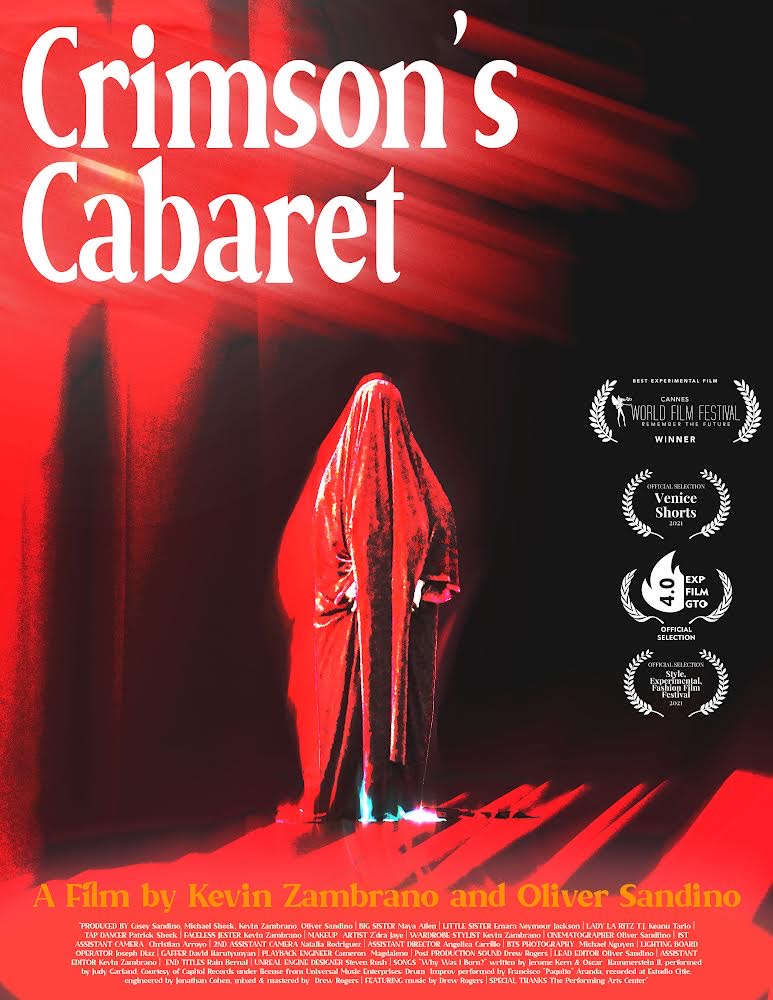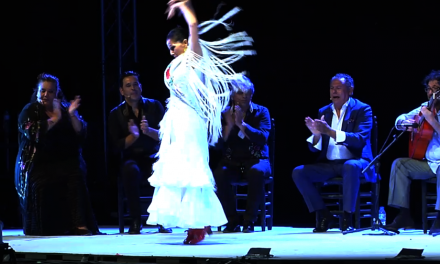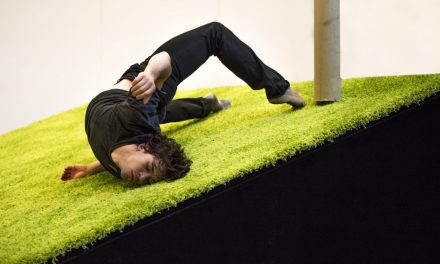Crimson’s Cabaret is a visually beautiful and mysterious music, dance, and theatre film by Kevin Zambrano and Oliver Sandino that hovers between reality and fantasy. Their film is currently traversing the International Film Festival circuit and has been awarded Best Experimental film at the Cannes World Film Festival 2021, and received Official Selection status at Venice Shorts and Guanajuato Experimental Film Festival 2021, as well as Official Selection: Style, Experimental, Fashion Film Festival 2021. Crimson’s Cabaret was produced by Casey Sandino, Michael Sheck, Kevin Zambrano, and Oliver Sandino.
The film involves the love between two sisters and how one’s (Little Sister) desire for fame and fortune almost destroys their relationship. Crimson’s Cabaret includes an unusual “carousel of characters” as well as wonderful music by Jerome Kern & Oscar Hammerstein II, Francisco “Paquito” Aranda and Drew Rogers. There is powerful dancing by Maya Allen (Big Sister), Emara Neymour-Jackson (Little Sister), and Patrick Sheck (Tap Dancer), and excellent performances are provided by T.J. Keanu Tario (Lady La Ritz) and Kearian Giertz (Mother). Zambrano makes a cameo appearance as the Faceless Jester.
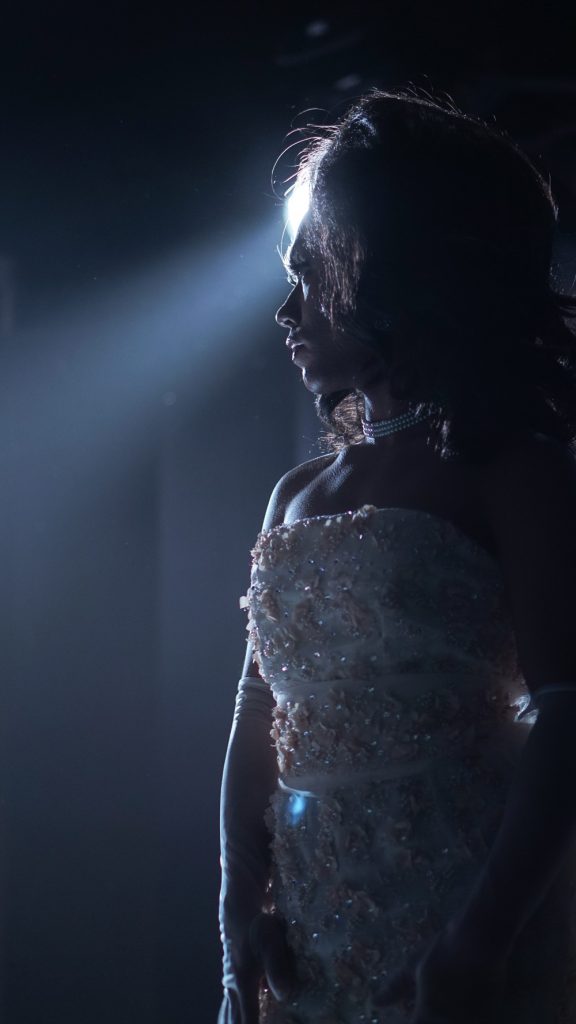
T.J. Keanu Tario (Lady La Ritz) in “Crimson’s Cabaret” a film by Kevin Zambrano and Oliver Sandino – Photo courtesy of the artists.
“Crimson’s Cabaret exposes the performer’s primal urge to belong and how easily it can distort dreams, love, and art. Between the opening curtain and final blackout exists the plane where solace and affliction dance in the noise.” – Crimson’s Cabaret press release.
Zambrano is a dancer/choreographer who received his BFA from California Institute of the Arts (CalArts) and Sandino is a director and cinematographer who has collaborated with Iggy Azalea and CeeLo Green, among others. The two actually met in elementary school but it was not until they began chatting over the phone during the pandemic shutdown that an idea was sparked and they began creating together.
While looking through Zambrano’s website, I noticed that Crimson’s Cabaret appeared third in line of a series called The Red Curtain Series.
JS: What was the genesis of the series and this film in particular? Was the series begun at CalArts as part of your degree?
KZ: I began The Red Curtain Series my BFA 2 year of CalArts. It was born for two reasons: my choreographic works weren’t being accepted into the dance shows and two, my love for the theater (on and off stage). I’m really interested in the performative aspects of everyday life, especially within the LGBTQ+ community and we hold onto these modes of living to protect, share, articulate, destroy and question ourselves.
In turn, I created my first installment Red Curtain vs. The People and now am still investigating the many worlds waiting behind the infamous red curtain. Crimson’s Cabaret would technically be my fifth installment, but it initially wasn’t intended to be.
However, trying to stray away from any images resembling that of the Red Curtain seemed impossible and out came this abstract film about the places between on and off stage. And that’s how this work began. A collection of images we wanted to string together through dance and music.
JS: Do you plan to extend “The Red Curtain Series” beyond what it is now?
KZ: Most definitely. I haven’t gotten bored of it, which is a good sign, so as long as I’m continuing to entertain myself and stay inspired, the Red Curtain isn’t going anywhere. My hope is that my world-making will lead me to bigger, grander places. I think it’s a fun place to live.
JS: Who are your mentors or film and dance artists who have inspired you?
OS: I’ve been blessed to have many mentors in my career thus far that have guided me in different aspects of the creative field. My late father was and is my greatest mentor who encouraged me to enjoy the fruits of life and just play. That’s what creating is to me. Directors that have inspired me are Stanley Kubrick, Wes Anderson, and Quentin Tarantino.
KZ: Mentors are so important! I wouldn’t be able to continue a career in the arts without them. Rosanna Gamson (CalArts Faculty), Bret Easterling (Batsheva, USC Faculty), Ryan Kelly (Gerard and Kelly) and Dimitri Chamblas (CalArts Dean) have all been outlets of endless support and knowledge.
In regard to inspiration, I pull from many greats. Nijinsky, Freddie Mercury, Stephen Sondheim, Bob Fosse, Gaspar Noé, Alexander McQueen, Nick Knight, but also my friends that surround me every day.
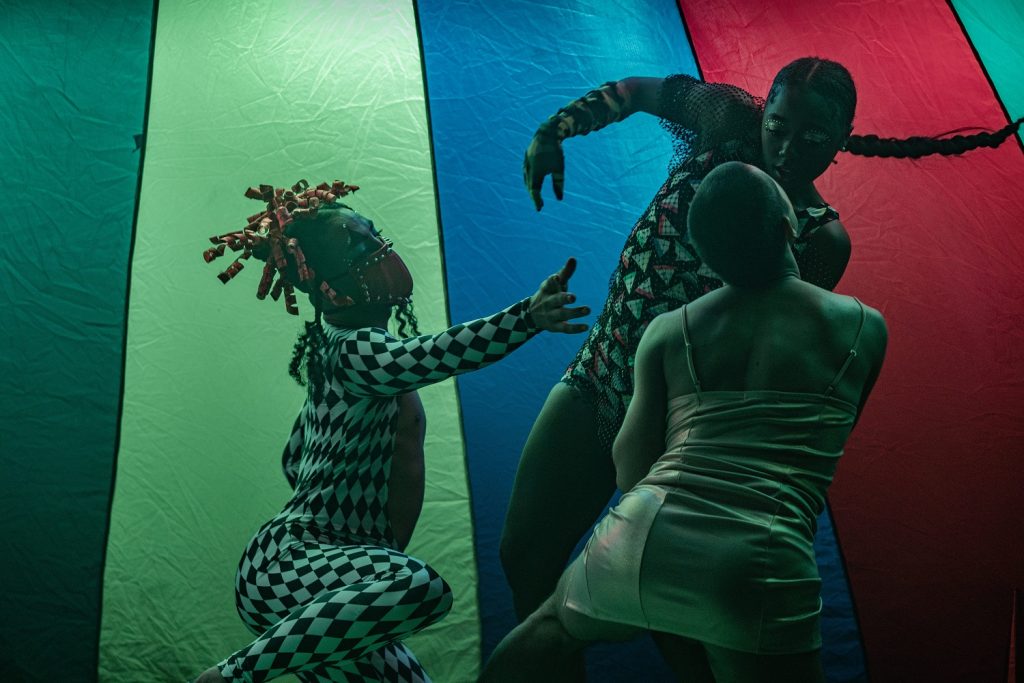
Scene from “Crimson’s Cabaret” a film by Kevin Zambrano and Oliver Sandino – Featured: Maya Allen, Emara Neymour-Jackson, and Kearian Gietz. – Photo courtesy of the artists.
JS: In addition to having a cabaret style setting, Crimson’s Cabaret takes on one of a circus with the performer in clown makeup and the tent shaped dress for the sisters to enter. Many people have a fear of clowns. Is there a reference to this in your film?
KZ: Our clown came from creating a version of Mother Ginger, with the intention to play with horror and drag. There’s a tie between the two within queer communities. The use of grotesque and horror genres as a form of self-expression can be linked to a queer person taking outsiders’ revulsion and utilizing it to become the monster. It’s more camp than scary as the stage is often utilized to confront traumas within the community.
This scene can also represent the womb of the creative process, which while beautiful, also carries an element of fear, confusion, and tension. Who wouldn’t want to climb into a dress of a larger than life drag queen?
JS: The mixing of contemporary dance styles with the 1929 song “Why Was I Born” sung by Judy Garland, and then to the sound of tap dancing is quite wonderful. What inspired this juxtaposition?
KZ: Again these scenes began as images. We wanted one image of a backup dancer falling during a performance and second, a tap dancer in the background of two people undressing. What was birthed was the use of rhythm to inform narrative. The rhythm starts as drums and transforms into a tap dancer,
all the while, the two women are experiencing conflict that escalates with the speed and intricacies of the rhythm. The “contemporary” movement during the tap sequence actually came from the women improvising with one another, resulting in an abstract version of two performers bickering backstage.
JS: Your press release mentions “that space between black and white.” Explain.
KZ: It’s that moment right before you go on stage. You’re not in your dressing room getting ready and you’re not on stage performing, but the electricity is there and you’re about to enter another reality. In this space, the boundaries of reality blur and art creates itself. It’s also the grey area of what’s right and wrong. Best summed up in lyrics from Into the Woods by the late Stephen Sondheim, “Must it all be either less or more, Either plain or grand? Is it always ‘or’? Is it never ‘and’?”
As the characters in the film experience this space, we as directors had a similar experience. In this way, the Crimson space is where we flourish.
JS: Why the drug induced experience inside the space between?
KZ: Cabaret lives within club settings. The club is also a liminal space where reality is distorted and rational thinking is subdued. In that space, morals waver and a young artist can easily become lost in the excitement of it all. It’s the dream sequence of our ballet.
JS: You have been making the International Film Festival circuit with this film. What has that experience been like?
KZ/OS: As our first film and first time in the festival circuit, we didn’t have any expectations really. We submitted after 9 months of editing and got accepted into the Venice Film Festival. Later that month, we won Best Experimental Film in the Cannes World Film Festival Monthly Competition, which was incredibly exciting. As a winner of the monthly competition, we’ve been entered in the annual competition of the festival, which takes place in 2022 in Cannes, France.
# # # #
The cast of Crimson’s Cabaret includes: Maya Allen (Big Sister), Emara Neymour-Jackson (Little Sister), T.J. Keanu Tario (Lady La Ritz), Kearian Giertz (Mother), Patrick Sheck (Tap Dancer), and Kevin Zambrano (Faceless Jester).
Crimson’s Cabaret was directed by Kevin Zambrano and Oliver Sandino; produced by Casey Sandino, Michael Sheck, Kevin Zambrano, and Oliver Sandino; Make-up Artist: Z’dra Jaye; Wardrobe Stylist: Kevin Zambrano; Cinematographer: Oliver Sandino; Assistant Director: Angelica Carrillo.
I highly recommend that our readers check out this stunning film.
# # # #
For the most up-to-date information on how to view Crimson’s Cabaret, please visit Instagram @oliversandino and @kevin_zam. A Vimeo link will be added on the film’s first anniversary, December 12, 2021.
Anyone interested in showing Crimson’s Cabaret, please email Oliver Sandino at oliverpsandino@gmail.com or Kevin Zambrano at zambranojkevin@gmail.com
Written by Jeff Slayton for LA Dance Chronicle.
Featured image: Scene from Crimson’s Cabaret a film by Kevin Zambrano and Oliver Sandino – Photo courtesy of the artists.

